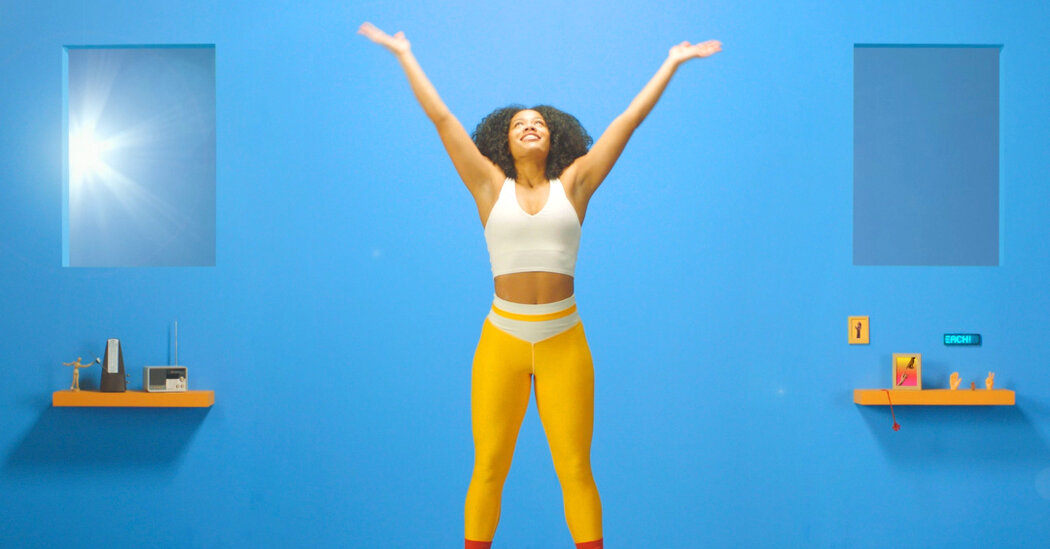
Researchers have identified several movements like this that are recognizable in many cultures as inspired by joy: reaching your arms up; swaying from side to side, like concertgoers losing themselves in the music; other rhythmic movements, such as bouncing to a beat; or taking up more space, like dancers spinning, arms outstretched. These physical actions don’t just express a feeling of joy — research shows they can also elicit it.
When people in several small studies were instructed to perform these kinds of movements, they reported more positive emotions. And opposite actions, such as sinking and shrinking, evoked sadness and fear. Another small study suggested the effects of so-called joy moves are stronger when you can see someone else doing the movements, too — in part because happiness is contagious.
The resulting eight and a half–minute Joy Workout lets you test these effects yourself. It leads you through six joy moves: reach, sway, bounce, shake, jump for joy and one I named “celebrate” that looks like tossing confetti in the air. I based these moves on research and on the movements that produce the most joy in my classes, among people of all ages and abilities. You should do the moves in any way that feels good — as big or as small and as fast or as slow as you like. If a movement doesn’t feel right, repeat a previous one or invent your own, moving in any way that feels joyful, powerful, playful or graceful. The video shows a standing workout, but you can also try it seated.
We added a soundtrack aimed at enhancing positive emotions. You’ll hear up-tempo songs in a major key, with a strong beat. If you have other go-to music that makes you happy, you can mute the video and play that instead.
The Joy Workout is just one way to lift your spirits through movement. Consider this video as an experiment and an invitation to find your own joy of movement. There are plenty of other science-backed ways to improve your mood with exercise:
-
Move with other people, in a class or a training group, or casually, with friends or family.
-
Move to music, either through traditional exercise like jogging or cycling, or anything that gets your body moving — like air guitar, drumming or singing karaoke.
Kelly McGonigal, PhD, is a health psychologist, lecturer at Stanford University, and author of The Joy of Movement: How Exercise Helps Us Find Happiness, Hope, Connection, and Courage. She is a certified group fitness instructor who has led movement classes for more than twenty years.




